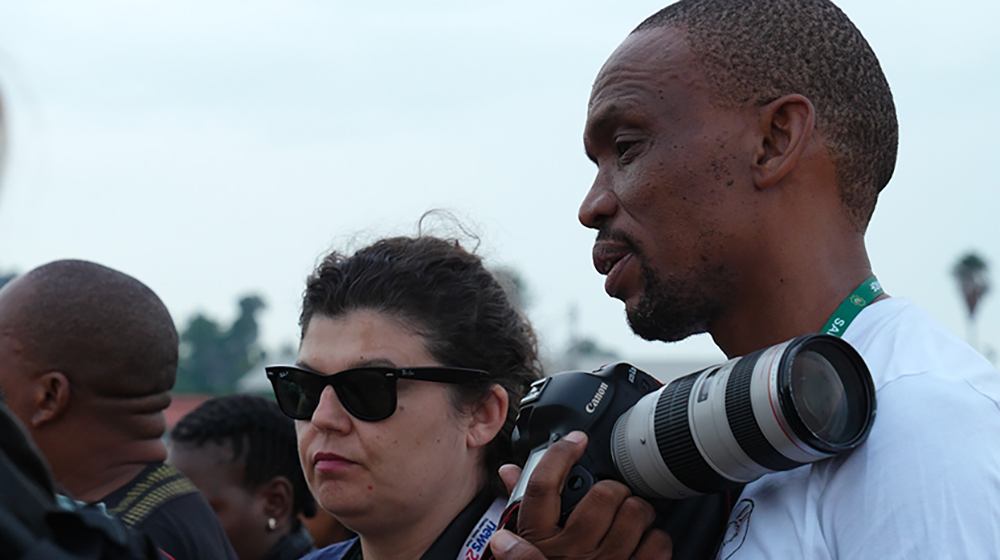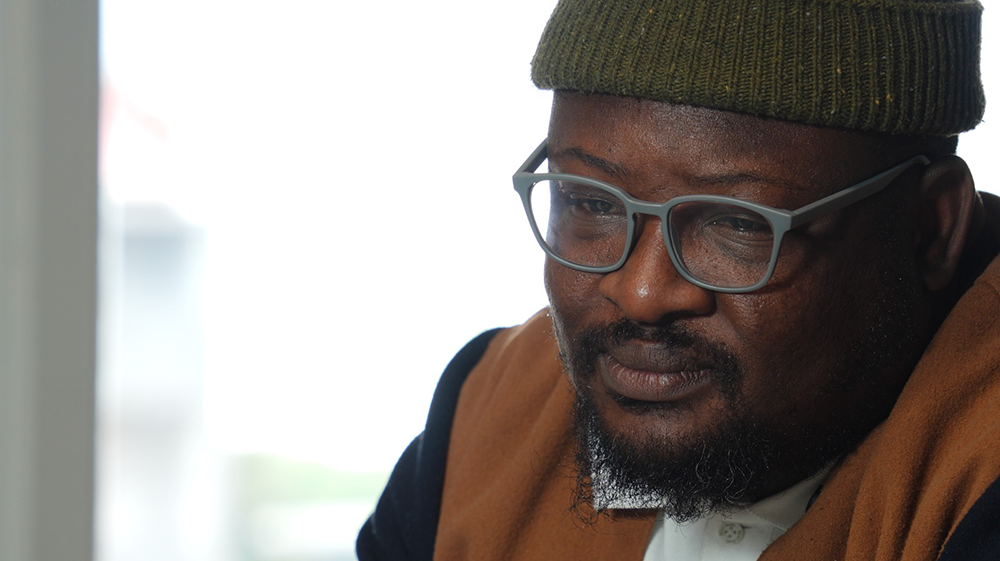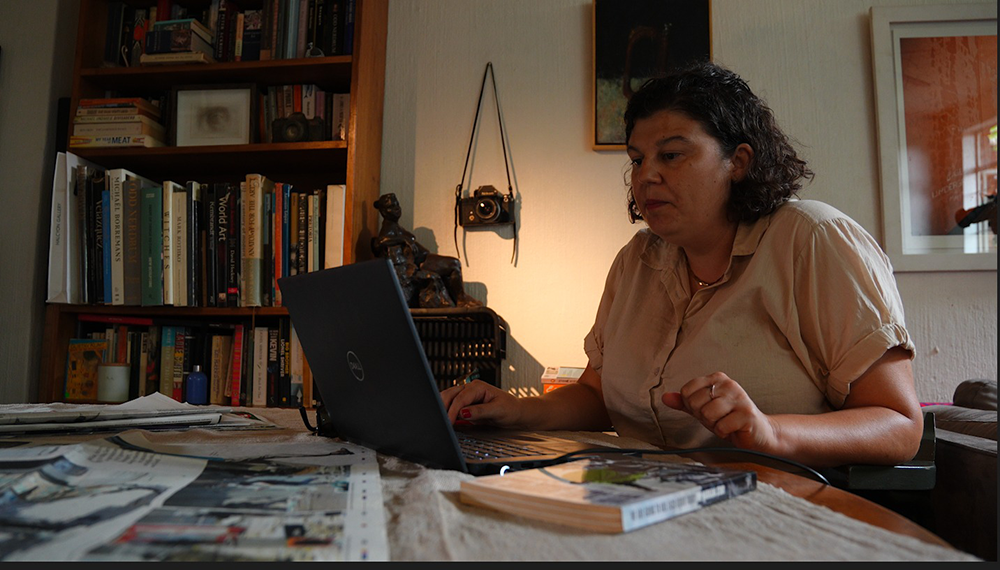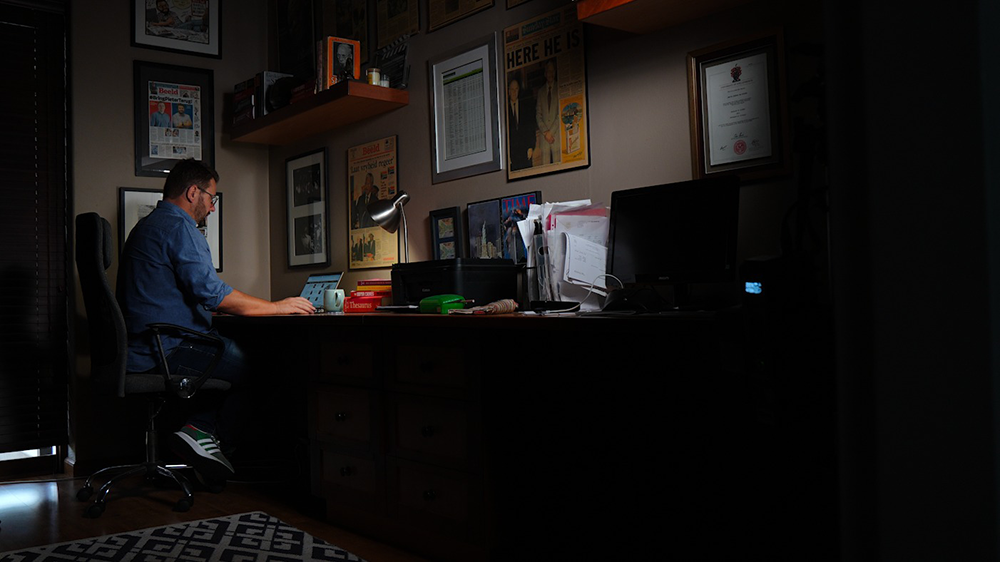



Short documentary: Felix by die koppie
If you’ve read a local newspaper over the past two decades or so, you would have seen one of Felix Dlangamandla’s images. As one of South Africa’s leading photojournalists, he has covered almost every major story. But it’s his experience of the Marikana massacre that becomes the focus of director and producer Xolani Nhlapo’s moving documentary, Felix by die koppie. Xolani and his co-producer, journalist Hancu Louw, tell us more about this story:
What led you to Felix and this story?
Xolani: In 2014, I was just stepping into the world of video journalism, and one day I was thrown into court coverage with zero clue of what shots to take. I’m standing there, camera in hand, totally lost. Then Janice Raath, the reporter I was shadowing, leans in and says, “See that guy? That’s Felix. Stick to him. Film whatever he films.”
Game-changer. I followed Felix like a shadow, and by the end of that day, I had everything I needed. He became a distant mentor figure to me.
Fast-forward to 2023. I’ve got a concept for a mini-doccie series relating to headlines that have shaken SA since democracy. My pitches were unsuccessful, so I pivoted, and when Silwerskerm popped up on my radar, it was the perfect opportunity to pitch Felix’s experience at Marikana as a short doccie.
And what led to the two of you taking on this story together?
Hancu: For the past three years, we have been working as a very close-knit team: Xolani as camera and audio operator, and myself as a field journalist. Due to the nature of reporting on a very wide range of stories, we spend a lot of time together, travelling for work. That has led to us developing a close bond as colleagues, journalists, aspiring filmmakers, and friends, all of which makes for a professional relationship that allows us both to push ourselves in honing our craft.
Xolani: Hancu and I go way back. He’s one of those solid journo pros – sharp, seasoned, and always in the trenches. You’ve probably seen his work on projects like In gesprek, but beyond that, he’s got serious chops in production management. Since 2022, we’ve been rolling as a tight camera operator/journalist duo.
From the get-go, Felix is referred to as a photojournalist rather than a photographer. In doing so, you’re highlighting that the photographer is as much of a journalist as the writer or the on-camera reporter. Why make that distinction?
Hancu: The role of the photographer is so much more than what most people realise, and it’s something which we sought to emphasise by trying to give the viewer a sense of what it’s like to be a reporter on the ground, faced by the realities of not only “getting the shot”, but also “telling the story”. Through that, we hopefully help the viewer to make the connection between Felix as a photographer, a human, a storyteller, and as an all-around journalist in every sense of the word.
Xolani: For me, Felix is what photojournalism looks like when it’s done right. No ego. No shortcuts. Just grit, instinct, and heart. Felix doesn’t just show up. He dives in headfirst every single time.
Revisiting the events at Marikana couldn’t have been easy for Felix, but he still shares so openly. How did you build trust with him?
Hancu: Time. Time. Time. And a whole lot of genuine conversations between the three of us. What helped a great deal to foster trust was our trip, the three of us, down to Felix’s hometown, Sterkspruit in the rural Eastern Cape. We drove down, nine hours one way, and spent a weekend shooting and spending time with Felix and his relatives. I think the trip and the overall honesty of our approach to making the film fostered the trust we needed to allow us to interrogate the events at Marikana. It was a massive privilege to gain his trust and to tell his story.
The story that you end up telling is so genuine and so honest. Were there challenges or compromises that you had to juggle to stay true to your vision for the story?
Xolani: The koppie visit was our final piece for the doccie. Felix always came across as very calm during his interviews, but the koppie was very different. From the moment we stepped foot on the koppie, the memories hit Felix like an avalanche. He began sharing everything. I had planned a sit-down interview with him, but Felix couldn’t wait for me. There was just raw emotion coming out; I had to act quickly and abandon my original plan and just roll the camera and capture what was happening.
When Felix is at the top of the koppie, saying, “It was quiet, you could hear a pin drop” – all of that was unplanned. I just embraced his emotions and allowed him to express himself. My feedback to the Silwerskerm mentors was that the shooting plan went out the window when we set foot on the koppie, and they told me to embrace the chaos.
The Marikana issue is also huge and complex. With the time and budget at our disposal, we made sure to remain focused on telling the story through Felix’s experience. This was key to keeping the story contained.
The documentary focuses on events that occurred more than a decade ago, but its messaging about the importance of journalism feels incredibly timely. What do you hope viewers will take from the documentary?
Hancu: The role of journalism in our still fledgling democracy. The importance of truth and reporting truthfully as journalists. The toll that this line of work takes on journalists, specifically photojournalists. The courage and sacrifice of people like Felix, who, for the most part, stay anonymous. The complicity of all involved in the Marikana massacre, and the complexity of the situation – I don’t think it will ever be resolved. The power of one man and his camera to ensure that the truth is made public.
The doccie has so many heart-wrenching images of that time, many never seen before. How did you choose what to include and what to leave out?
Xolani: Felix was kind enough to allow me to have access to his archive. I studied the images as I listened to our interviews. Then I could see in my head how I’d use the pictures. I printed some of them because I knew how they’d serve the plot and help Felix narrate the crucial moments. Some of them were so chaotic, and you could tell Felix just had his finger on the shutter, so I decided to use them as stop-motion in the documentary.
